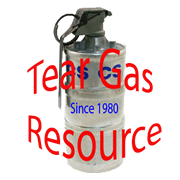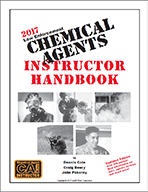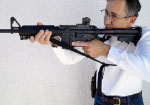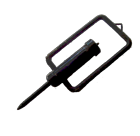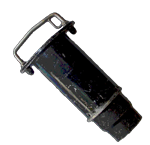 accordingly. There are several groups that sponsor training for the potential activist just like we do. They teach their students how to avoid arrests, avoid tear gas, how to act after arrests and how to make your life difficult in arresting them. To name a few of the groups:
accordingly. There are several groups that sponsor training for the potential activist just like we do. They teach their students how to avoid arrests, avoid tear gas, how to act after arrests and how to make your life difficult in arresting them. To name a few of the groups:
- Direct Action Camp
- The Ruckus Society
- War Resister’s League
- StarHawk
- The Network for Freelance Photojournalists
- International News Safety Institute
- Civil Disobedience Training Camp at Keuka Lake
- Forest activists hold civil disobedience 'boot camp
Many manuals and publications have been written about the subject of thwarting law enforcement's efforts to use tear gas. Here is a partial list with links to their websites:
- Handbook for Nonviolent Action
- StarHawk’s tips on preparing for teargas
- Demotex tear gas recommendations
- INSI
- Echo Action Network
- AngleFire Has the most complete info for protestors. As you read it you will see that they really don’t understand what they should be doing for themselves. The best thing they could do is STAY OUT of the chemicals.
From the Angle Fire Website here is an example of their misunderstandings:
“The M17A1 clones are better as they are smaller and less easy to remove and fog up, but cost more and are harder to easily find.
If you cannot afford a mask or cannot find one, don't fret. Two other options are using a bandana that has been soaked in vinegar (This will do nothing for them) or a chemical respirator that can be found at a hardware store. (Any respirator that uses a HEPA filter will work for them) When wearing one of these you will also need a pair of tight fitting goggles as neither protects your eyes. Ski goggles are good. (Most ski goggles have vents to help with fogging. CS particles will go through the vents like they don’t have goggles on) A pair of Speed swim goggles or similar will work but be sure goggles seal tightly around your eye sockets! (Best for goggles. We’ve tried them and they work)”
Human rights officials tell BBC that “military grade” CS gas is being used in Tahrir, not the routine crowd control stuff. (There is only one type of CS used. The military type is called CS-2. It is the same as CS-1 except the chemical has a silicon coating that makes it stand up to moisture better. Typically used in an area denial scenario)
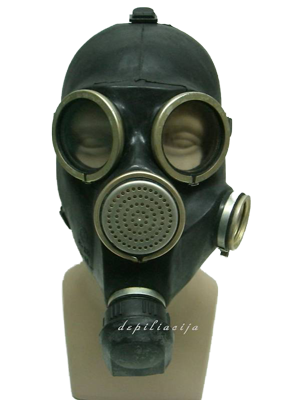 However, respirators are readily available on the internet and many military surplus stores. Here is an example of a respirator, although it is dated it will probably still work, for sale on E-Bay for $10.00.
However, respirators are readily available on the internet and many military surplus stores. Here is an example of a respirator, although it is dated it will probably still work, for sale on E-Bay for $10.00.
It is important to know what the protesters think they can and cannot do before you use force in the form of non-lethal chemical agents to move them.
Taken from the How to Occupy Website as an example:

GUIDE FOR DEMONSTRATORS
First Amendment Activity and Potential Consequences You have a constitutionally protected right to express your views in public spaces. This includes sidewalks, parks, as well as other locations that the government has opened up to similar speech activities, such as the plazas in front of government buildings. Because these and other activities are constitutionally protected, there is little risk of arrest when holding signs, leafleting, marching (or standing still) and chanting, drumming, singing or dancing when demonstrating.
Some activities are illegal, and you can be arrested for them. Since Police Officers usually warn demonstrators to stop if they believe that the demonstrators are engaging in illegal activities, demonstrators will sometimes participate in activities that may subject them to arrest without being arrested. There is some risk of arrest nonetheless. Other demonstrators engage in peaceful but unlawful activities to be arrested as a form of protest called “civil disobedience.” A short list of activities engaged in at demonstrations is provided below.
Protected Activities
· Holding signs
· Leafleting
· Drumming, dancing, singing, chanting
 · Marching
· Marching
· Standing still in a group
· Approaching pedestrians on a public sidewalk with leaflets, newspapers, petitions, and solicitations for donations
· Setting up tables on public sidewalks for these purposes, so long as the walk s not blocked
· Wearing a mask or concealing your face
Illegal Activities
· Blocking street traffic
· Blocking pedestrian right of way
· Harassing or accosting passers-by
· Inciting a crowd to imminent violence or illegal activity
· Entering or remaining on other property after being informed that you are not welcome
· Violence against any person
· Destruction of property
· However, wearing a mask or concealing your identity, while engaging in unlawful activity, can act as a penalty enhancer.
Other activities seen at demonstrations that may be illegal include: Resisting arrest or obstructing an officer (see reverse), fastening signs (other than to bulletin boards generally open for posting information), littering, or using excessive noise.
What to Do If You Get Into Teargas
From the: War Resister’s League
Breathing in tear gas, or getting it in your eyes, is not fun.  This, obviously, is the whole point. But there are things you can do to mitigate the effectiveness of tear gas, and allow you to keep on fighting the good fight.
This, obviously, is the whole point. But there are things you can do to mitigate the effectiveness of tear gas, and allow you to keep on fighting the good fight.
The first thing to remember about tear gas is that it is primarily a fear weapon. Yes, the gas hurts. But the fear caused by tear gas grenades is a much more effective means of crowd dispersal than the gas itself. So rule number one is to calm down.
Tear gas usually is delivered in the form a grenade, which is fitted onto the end of a gas gun and fired with a blank shotgun cartridge. Therefore, you may hear shots being fired when tear gas is used. Don't assume you are being shot at. Do not panic. Look up when you hear the shot and avoid being in the path of the grenade. Tear gas grenades often explode in the air, delivering a metal container which will spew gas. This container will be hot, so do not touch it. Do not pick up an unexploded tear gas canister, since it could explode and cause injury.
The best defense against tear gas is a gas mask, but if you don't have a mask there are still steps you can take to minimize damage from tear gas. If you think you might encounter tear gas you can soak a bandana or paper towel in lemon juice or cider vinegar and store it in a plastic baggie. You can breathe through the acidified cloth for several minutes, which should give you sufficient time to get upwind or reach higher ground. Goggles are a great thing to have. You can use tight-fitting swim goggles if chemical safety goggles aren't available. Don't wear contacts anywhere you might encounter tear gas. If you are wearing contact lenses, immediately remove them. Your contacts are a loss as is anything else you can't wash. You can wear your clothes again after you wash them, but wash them separately that first time. If you don't have goggles or any sort of mask, you can breathe the air inside your shirt, since there is less air circulation and therefore a lower concentration of the gas, but that is counterproductive once the fabric becomes saturated.
The wind is your friend. Move upwind of the gas. This will blow the majority of the gas away from you. Do not panic. Do not run. Panic is precisely what the police are trying to create.
If you have gloves and something to protect your face (which I'll talk about soon), you can pick up the gas emitter and lob it back at the police. This is a considerate thing to do to protect your fellow protesters. The emitter will be hot, so gloves are recommended. Remember, the police are thoroughly protected against gas; throwing it back at them is not a violent act.
WARNING: Picking up the gas emitter will ensure that your clothing is saturated with tear gas. This is extremely unpleasant and will require very thorough laundering with harsh detergent. Prevent contact between gassy clothes and your face, as the chemical agents are active even days later.
WARNING: Do not pick up a grenade which has not exploded. You can be injured if/when it goes off in your hand. Some are, of course, duds. But it is not safe to assume that unexploded grenade at your feet is a dud.
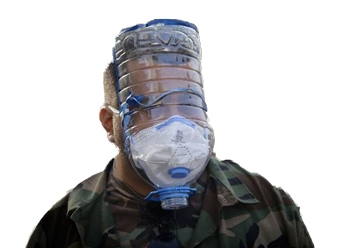 Assuming you don't have a gas mask (which is essential for prolonged operation in a tear-gassy environment), a bandanna or other cloth which has been soaked in vinegar or lemon juice will allow you to breathe long enough to escape the gas. Mask up! Cider vinegar is less harsh-smelling and is recommended. Breathing in vinegar is not pleasant, but compared to tear gas it's like fresh air. Unfortunately, the vinegar's protective effect does not last long (minutes), and your bandanna will be saturated with gas afterward. So bring several. Re tying a gassy bandanna around your face is not a good idea. Make sure the bandanna fits tightly around your nose and mouth.
Assuming you don't have a gas mask (which is essential for prolonged operation in a tear-gassy environment), a bandanna or other cloth which has been soaked in vinegar or lemon juice will allow you to breathe long enough to escape the gas. Mask up! Cider vinegar is less harsh-smelling and is recommended. Breathing in vinegar is not pleasant, but compared to tear gas it's like fresh air. Unfortunately, the vinegar's protective effect does not last long (minutes), and your bandanna will be saturated with gas afterward. So bring several. Re tying a gassy bandanna around your face is not a good idea. Make sure the bandanna fits tightly around your nose and mouth.
You must wear goggles. Goggles which are air tight. It is one thing to have severe upper respiratory pain. It is another to have that and also have burning, watering eyes.
Two important notes here: Firstly DO NOT wear contact lenses to any event where there is even a possibility of tear gas usage. The contacts will trap the gas against your eyes which, aside from being hideously painful, will eventually damage your cornea. Secondly, many places have, or have recently enacted, laws against wearing masks. In some southern states these laws were implemented to defeat the Ku Klux Klan; these days they're more likely specifically aimed at dissenters who don't wish to have their faces filed away by the FBI. So, be aware that wearing a gas mask or a bandanna may be, in itself, illegal. Yes, protecting yourself from police violence, even passively, can get you thrown in jail. 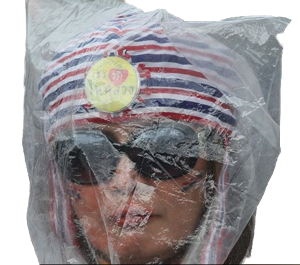
My description of what tear gas feels like is this: it feels as if the inside of your head is being dissolved by acid. There is a burning pain and a liquefying feeling as mucous, tears and saliva all begin flowing. Spit, blow your nose, rinse out your mouth, gargle. If necessary, do an eyewash by squirting water across your eye from the inside to the outside with your head tilted to the side.
WARNING: You should really get a brief training before you do this. Contact your local activist organization. Also, the eyewash procedure for pepper spray is different.
Different people react differently to the gas. I've seen totally unprotected people go up against cops and gas for hours by sheer force of will. However, don't expect that you will be able to. You may be pleasantly surprised, though.
Finally, diffuse tear gas lingers in the air for a long time. Expect eye, nose and throat irritation for several hours after tear gas has been used in an area, especially if the use of gas was extremely liberal (as in Quebec City).
Decontamination
From: Democrtati.net
Decontamination is important to reduce injury and continued exposure from agent on the skin, hair, and clothing. This is particularly important for those in contact with RCAs in enclosed areas for long periods of time, such as individuals running mask confidence training who are in the chamber repeatedly throughout a single day. Large amount of exposure to CS has resulted in erythema (red skin), minor skin burns, and blistering on the neck, arms, and other areas that were not continuously protected by a mask or clothing.
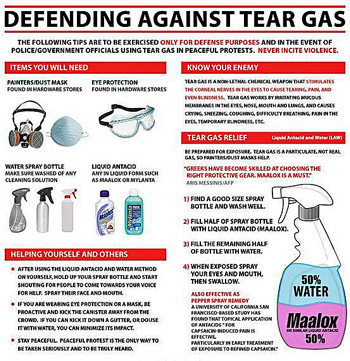
If unable to wear adequate dermal protection during exposure one MUST shower immediately with soap and water as soon as they return home.
When dry agents (CS, CR, CN, and DM) are dispensed in the open air in limited quantities, all that is needed to remove the agent, particularly when protective clothing is worn, is brisk movement: flapping the arms and rubbing the hair in a breeze or standing in front of a large fan. This will disperse most of the particles from the clothing and hair.
The mask should be worn during this process to insure that particles blown from other people performing the same procedure upwind are not inhaled. However, agent particles adhere to sweaty skin, so completely effective decontamination requires clothing removal followed by thorough washing of exposed skin and hair. Contaminated clothing should be removed and if laundered, cold water should be used to reduce vaporization of the agent.
Soap and water are an effective decontaminant for RCAs; they will not neutralize the agent but will wash it away. Water should be used in copious amounts. Soap helps loosen the dry particles and remove them adequately from the skin surface.
CR, CN and DM hydrolyze very slowly in water, even when alkali is present. Because these agents do not decompose in water, washing with soap and water will only remove them from surfaces. Run-off may produce irritation if it gets into the eyes, so the eyes should be closed and head lowered during decontamination (if the agent is not already in the eyes). Environmental contamination from these agents may be persistent and difficult to remove. CS is insoluble in water but will hydrolyze in water at a pH of 7, with a half-life of approximately 15 minutes at room temperature, and extremely rapidly in alkaline solution with a pH of 9, with a half-life of about 1 minute.
Decontamination solutions used on human skin should not be caustic to the skin. A solution containing 6% sodium bicarbonate, 3% sodium carbonate, and 1% benzalkonium chloride was found to bring prompt relief of symptoms and to hydrolyze CS. No form of hypochlorite should ever be used to decontaminate CS or other RCAs because it can react with CS to produce more toxic chemical by-products and will further irritate tissues. Applying water or soap and water to skin exposed to CS or OC but decontaminated may result in a transient worsening of the burning sensation, which should dissipate with continued water flushing. PS liquid can also be decontaminated with soap and water, and clothing, which can trap vapor, should be removed.
Water in limited quantities increases the pain symptoms from OC, which has a water solubility of 0.090 g/L at 37° C. Without decontamination, OC symptoms should dissipate over time as the body’s substance P is diminished. OC resin can also be decontaminated with copious amounts of water, liquid soap and water, baby shampoo, alcohol, or cold milk. OC in the eyes can be decontaminated with copious water flushing, but symptoms may not dissipate for 10 minutes.
A compress of cold milk, ice water, or snow can help reduce the burning sensation once the individual has been decontaminated. Substances with high fat content, such as whipped cream or ice cream, also aid in decontamination and help reduce pain. Although OC is soluble in vegetable oil and other hydrocarbons, and such solutions can more easily be washed off the skin, hydrocarbons must not be used with solutions of OC and other RCAs such as CN.
What can we do?
What alternatives do we have? A lot depends on the tools we have available. Of course the actions of the protesters will determine the level of force we use. Some of the typical tools are:
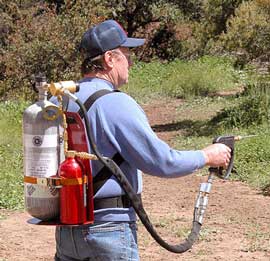 |
| Liquid Aerosol Agents (X-Stream pictured)
|
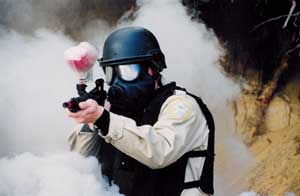 |
| PepperBall
|
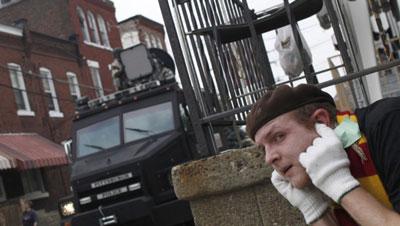 |
| Sound using Acoustical Devices (from CBS News)
|
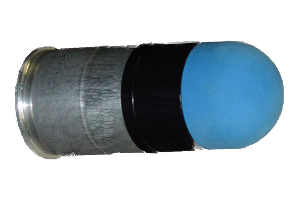 |
| Direct Impact Munitions
|
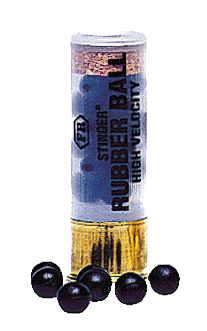 |
| Stinger Rounds
|
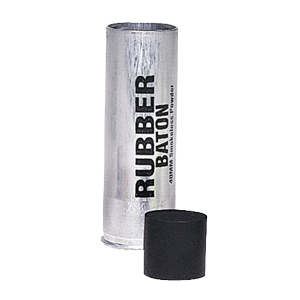  |
| Soft or Foam Baton Rounds
|
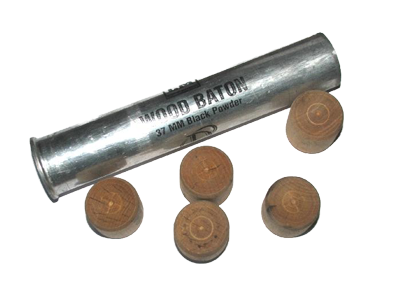 |
| Wooden Baton Rounds
|
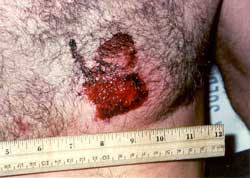 |
| Bean Bag
|
 |
| Canines (Gas mask WWII)
|
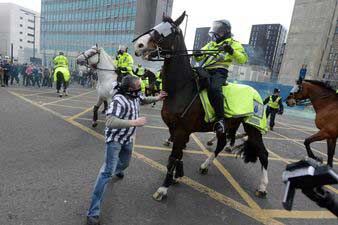 |
| Horses (soccer riots in UK)
|
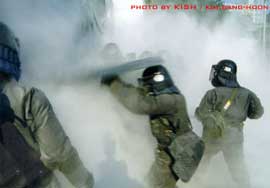 |
| Mobile Field Force Tactics (AKA Stick Time)
|
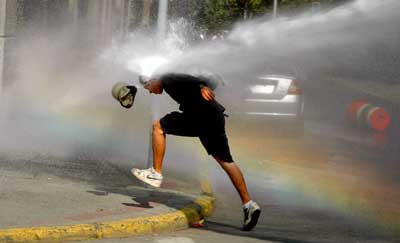 |
| Water Cannons with and without agent in the stream (from Washington Post)
|
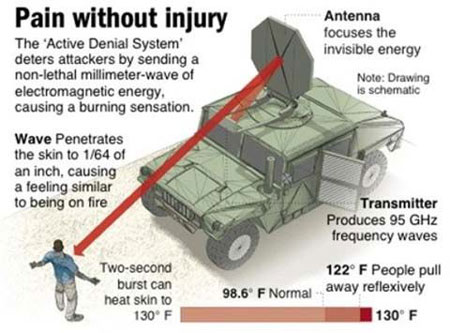 |
| Raytheon Wave Energy (In Military Testing)
|
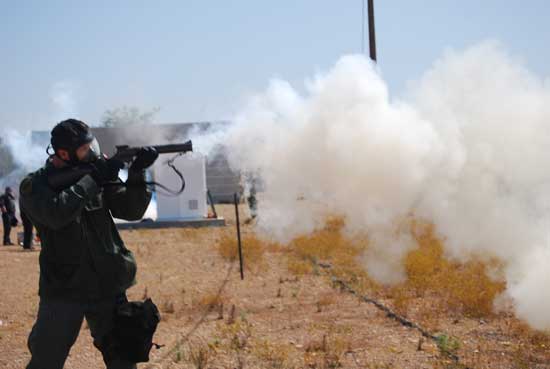 |
| Malodorants (Not released for Law Enforcement Yet)
IN 2015 SDI released maloderant round |
